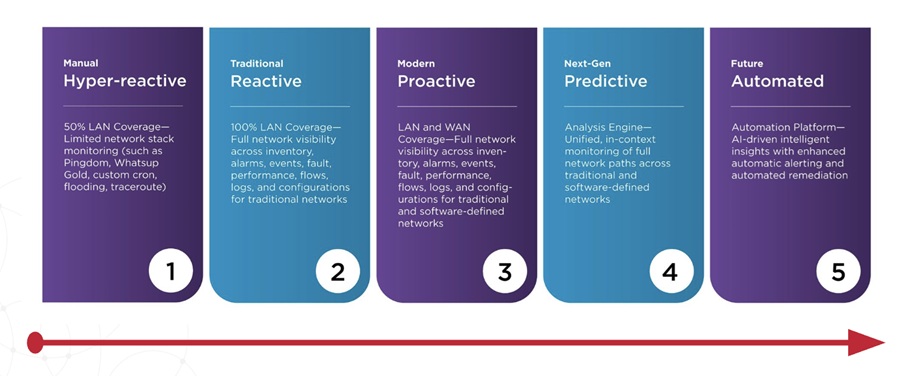According to the Cisco Visual Networking Index Global Mobile Data Traffic Forecast for 2012 to 2017, worldwide mobile data traffic will increase 13-fold over the next four years, reaching 11.2 exabytes* per month (for an annual run rate of 134 exabytes) by 2017.
The expected steady increase in mobile traffic is partly due to continued strong growth in the number of mobile Internet connections (personal devices and machine-to-machine applications), which will exceed the world’s population (United Nations estimates 7.6 billion) by 2017.
*An exabyte is a unit of information or computer storage equal to one quintillion bytes.
The forecast’s annual run rate of 134 exabytes of mobile data traffic is equivalent to:
- 134 times all the Internet Protocol traffic (fixed and mobile) generated in the year 2000, or
- 30 trillion images (e.g., via MMS or Instagram) — 10 images daily from each person on earth for one year, or
- 3 trillion video clips (e.g., YouTube) — one video clip daily from each person on earth over one year.
The projected 2012 to 2017 global mobile data traffic increase represents a compound annual growth rate of 66 percent. The incremental amount of traffic being added to the mobile Internet just between 2016 and 2017 is 3.7 exabytes per month, which is more than four times the estimated size of the entire mobile Internet in 2012 (885 petabytes per month).
During the 2012 to 2017 forecast period, Cisco anticipates that global mobile data traffic will outpace global fixed data traffic by a factor of three.
The following major trends are driving global mobile data traffic growth:
- More mobile users: By 2017, there will be 5.2 billion mobile users (up from 4.3 billion in 2012).
- More mobile connections: By 2017, there will be more than 10 billion mobile devices/connections, including more than 1.7 billion M2M connections (up from 7 billion total mobile devices and M2M connections in 2012).
- Faster mobile speeds: Average global mobile network speeds will increase seven-fold from 2012 (0.5 Mbps) to 2017 (3.9 Mbps).
- More mobile video: By 2017, mobile video will represent 66 percent of global mobile data traffic (up from 51 percent in 2012).
Impact of Mobile Devices/Connections:
- Smartphones, laptops, and tablets will drive 93 percent of global mobile data traffic by 2017.
- M2M traffic (such as GPS systems in cars, asset tracking systems, medical applications, etc.) will represent 5 percent of 2017 global mobile data traffic.
- Basic handsets will account for the remaining 2 percent of global mobile data traffic in 2017.
- In 2012, 14 percent of all mobile-connected devices/connections (1 billion) were IPv6-capable.
- By 2017, 41 percent of all mobile-connected devices/connections (4.2 billion) will be IPv6-capable.
“By 2017, global mobile data traffic will continue its truly remarkable growth, increasing 13-fold over the next five years, to reach an amount more than 46 times the total amount of mobile IP traffic just a few years ago in 2010," says Doug Webster, VP of Service Provider Networking Marketing, Cisco. "With such dramatic adoption, we are rapidly approaching the time when nearly every network experience will be a mobile one and, more often than not, a visual one as well. This trend is a result of the seemingly insatiable demand by consumers and businesses alike to achieve the benefits gained when connecting people, data, and things in an Internet of Everything.”
Hot Topic
The Latest
As enterprises accelerate their cloud adoption strategies, CIOs are routinely exceeding their cloud budgets — a concern that's about to face additional pressure from an unexpected direction: uncertainty over semiconductor tariffs. The CIO Cloud Trends Survey & Report from Azul reveals the extent continued cloud investment despite cost overruns, and how organizations are attempting to bring spending under control ...

According to Auvik's 2025 IT Trends Report, 60% of IT professionals feel at least moderately burned out on the job, with 43% stating that their workload is contributing to work stress. At the same time, many IT professionals are naming AI and machine learning as key areas they'd most like to upskill ...
Businesses that face downtime or outages risk financial and reputational damage, as well as reducing partner, shareholder, and customer trust. One of the major challenges that enterprises face is implementing a robust business continuity plan. What's the solution? The answer may lie in disaster recovery tactics such as truly immutable storage and regular disaster recovery testing ...
IT spending is expected to jump nearly 10% in 2025, and organizations are now facing pressure to manage costs without slowing down critical functions like observability. To meet the challenge, leaders are turning to smarter, more cost effective business strategies. Enter stage right: OpenTelemetry, the missing piece of the puzzle that is no longer just an option but rather a strategic advantage ...
Amidst the threat of cyberhacks and data breaches, companies install several security measures to keep their business safely afloat. These measures aim to protect businesses, employees, and crucial data. Yet, employees perceive them as burdensome. Frustrated with complex logins, slow access, and constant security checks, workers decide to completely bypass all security set-ups ...

In MEAN TIME TO INSIGHT Episode 13, Shamus McGillicuddy, VP of Research, Network Infrastructure and Operations, at EMA discusses hybrid multi-cloud networking strategy ...
In high-traffic environments, the sheer volume and unpredictable nature of network incidents can quickly overwhelm even the most skilled teams, hindering their ability to react swiftly and effectively, potentially impacting service availability and overall business performance. This is where closed-loop remediation comes into the picture: an IT management concept designed to address the escalating complexity of modern networks ...
In 2025, enterprise workflows are undergoing a seismic shift. Propelled by breakthroughs in generative AI (GenAI), large language models (LLMs), and natural language processing (NLP), a new paradigm is emerging — agentic AI. This technology is not just automating tasks; it's reimagining how organizations make decisions, engage customers, and operate at scale ...
In the early days of the cloud revolution, business leaders perceived cloud services as a means of sidelining IT organizations. IT was too slow, too expensive, or incapable of supporting new technologies. With a team of developers, line of business managers could deploy new applications and services in the cloud. IT has been fighting to retake control ever since. Today, IT is back in the driver's seat, according to new research by Enterprise Management Associates (EMA) ...
In today's fast-paced and increasingly complex network environments, Network Operations Centers (NOCs) are the backbone of ensuring continuous uptime, smooth service delivery, and rapid issue resolution. However, the challenges faced by NOC teams are only growing. In a recent study, 78% state network complexity has grown significantly over the last few years while 84% regularly learn about network issues from users. It is imperative we adopt a new approach to managing today's network experiences ...

